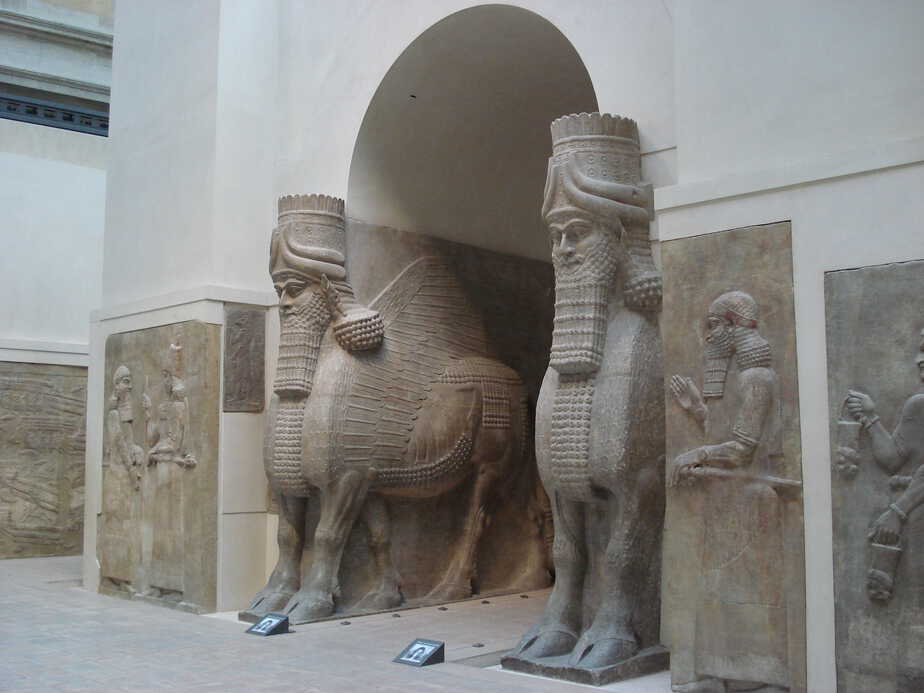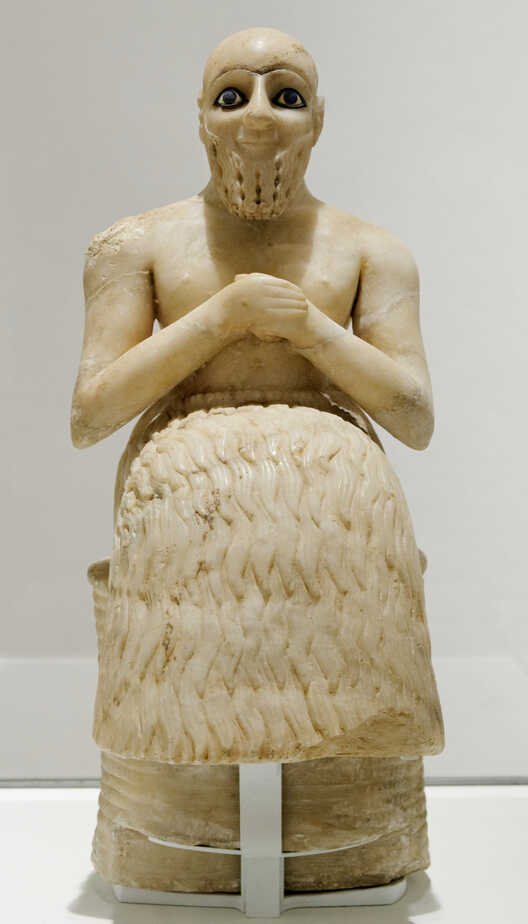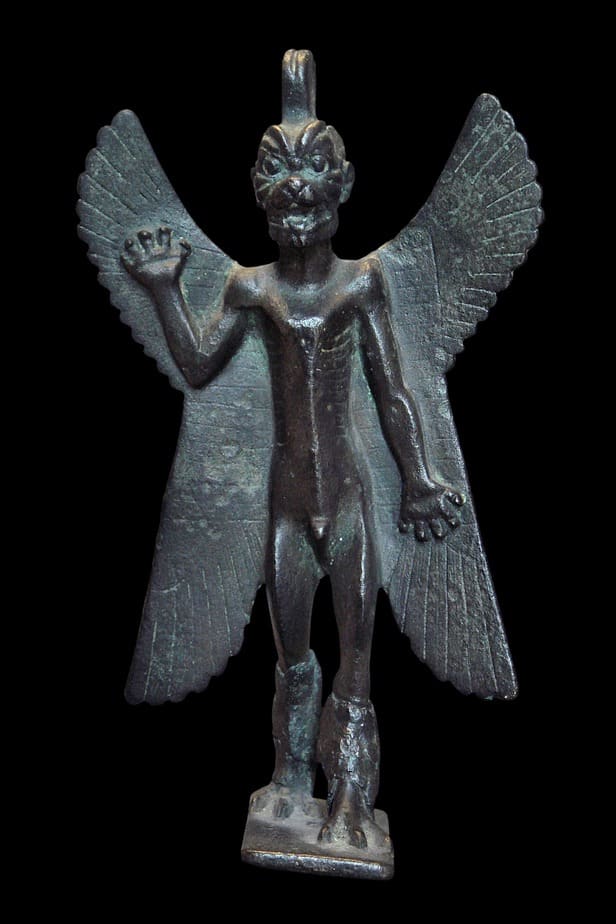10 Best Middle-Eastern Antiquities in the Louvre
Le Louvre has one characteristic that is both an advantage and a drawback: it is huge. No less than 14 km (8 miles) of galleries. As a consequence, visitors are often tempted to leave after they see the stars of the museum: Italian paintings and Greek statues.
However, the middle-eastern antiquities department deserves a visit: it is one of the richest and more interesting in the world.
In the 19th century, it was relatively easy for the archeologists from France, Germany and the United Kingdom to explore and collect pieces underground. These territories were in the control of the Ottoman Empire or the Shah of Iran. An Assyrian museum was created in 1847 and the collections completed to become one of the main department of the Louvre.
The middle-east is one of the most important cradles of the civilization, where writing and law codes were invented. A prosperous region watered by the Mediterranean Sea and the rivers Euphrates and Tigris river.
Many cultures developed there over the centuries from the Sumerian city-states to the empires of the Assyrians and the Persians.
Let’s discover its most beautiful art pieces!
1. Aïn Ghazal
We will start with the oldest statue of the museum, which dates from no less than 9,000 years ago.
Its name means “the Source of the Gazelle”, referring to the place where it was found by the archeologists. This standing statue is exceptional: restored in Washington, it has been lent to the Louvre by Jordanie for 30 years.
Its meaning remains enigmatic but specialists assume that it was meant to simulate the presence of the deceased in the house. It looked much more lifelike than today, as the statue had clothes and a wig.
Archeologists remain very intrigued by this culture from the Neolithic period, at the time of the invention of agriculture and breeding. What is most striking is their strange burial practices: sometimes the deceased were buried outside, sometimes under the house and some were even thrown into garbage pits ! As writing was not invented yet, it is hard to find an explanation.
2. The frieze of the griffins
We shall now explore the impressive remains of the Darius I palace. The mighty king of Persia built a palace in Susa, in modern Iran, around the fifth century BC. It was discovered under the sand by French archeologists. Le Louvre gathered very impressive pieces to exhibit for our pleasure!
What a strange animal: a lion’s head, the ears of a bull, two curved goat horns, the body of a lion, the forelegs of a lion, the feet of an eagle! Unsure of the identity of this creature, the Louvre refers to it as the griffin-lion.
The meaning remains unclear. However, it shows the richness of the mythology of the Persians, full of fantastic creatures. The Persians of Darius I, refered to as the Achaemenides, had incorporated the culture of the many civilizations that came from the Middle-East before.
The material used, like in many others artpieces from the Susa Palace, is glazed bricks.
3. The frieze of the archers
Here we have an army. It seems that they are doing a parade. The bearded men with long Persian robes carry bows, quivers and spears. The decoration is inspired of an older brick frieze in Babylon.
They might represent some of the ten thousand “Immortals”. These were the royal guards of Darius, the best soldiers of an impressive army that submitted immense regions for centuries, only to be defeated by Alexander the Great. They were called this way because whenever some of them died, he was quickly replaced by another one. Thus they would always be 10,000.
Another hypothesis is that it could be an idealized image of the Persian people.
4. Decorative panel with sphinxes
These seated sphinxes are seated in front of one another but looking backward. On top of them the disc of Ahura-Mazda, “the greatest of the gods” in the Persian religion.
The sphinxes wear divine tiaras, with the head of the king Darius. They are guardian deities and the embodiment of the royal person.
In this way the Persian sphinxes are very similar to the Egyptian ones who also represent the king ready to leap on its enemies. They however strongly differ from the Greeks one, that are monsters of the mythologies.
5. Capital of a column from the audience hall
This already huge piece is only the top of one of the 21 meters high columns of this room. There were originally 36 limestone columns like this one. We can imagine how intimidating it was to penetrate this room to talk to the most powerful king of that era!
The kneeling bulls back to back symbolizes the cosmic equilibrium. The specialists identified different styles that are combined here to demonstrate the unification of the different parts of the Empire. It was important to create an identification of the various people submitted to the new dynasty that ruled them.
In many cases, artists and craftmen were called from these very different regions to bring this diversity of style.
6. The Hammurabi code
This basalt stele is no less than the first complete list of laws ever made in human history. It was made by the king of Babylon Hammurabi, around 1750 BC. This legislative code was still enforced in the Assyrian empire one thousand years later.
This fascinating piece compiles 282 articles governing the primary aspecs of society. The most famous of it, the law of retaliation gave birth to the formula “an eye for an eye, a tooth for a tooth”. For instance, if a house built by a mason collapse killing the son of the owner, the code recommands to kill the son of the mason.
Justice was very harsh in those times. Another example: a women committing adultery would face a death sentence.
In some cases, the code lets the gods be the judge. The accused can be thrown to the river. If he drowns that means he was guilty. If he survived, the gods have shown his innocence.
7. The winged Assyrian bulls
This is my favorite Mesopotamian artpiece in the Louvre. They were meant to guard the gate of the palace of the Assyrian king in Khorsabad, in modern Iraq. Their size makes them indeed scary.
They were made by the Assyrian king Sargon II around 720 BC. He belonged to a serie of mighty Assyrian kings who were able to submit Babylon, Palestine and even to impose a tribute to Egypt.
These winged bulls were called Lamassu by the Assyrian. They have a human-head but the body of a lion or a bull and the wings of an eagle. The ones in the Louvre have a fifth leg to give an impression of movement.
In Le Louvre you have originals and replicas. This is due to the loss of some of these lamassu.
In 1885, the antiquities discovered by the French archeologists around Khorsabad were put in boxes to be shipped in 8 rafts to France. The consul of France who was responsible for the transfer was called back to Paris and had to leave the Iraqi captain responsible for the end of the journey.
This Iraqi captain made several stops to load other goods to maximise his profits. That is how he caught the attention of pirates. The attack caused a shipwreck, and of the 235 boxes, only 26 arrived in France.
8. Ebih-il, superintendant of Mari
Among the many ancient little objects kept in the Louvre, this might be the most beautiful one.
This remarkably preserved statue is a votive object, offered to a temple around 2400 BC. We assume it was the goddess Ishtar.
The short inscription in cuneiform tells us that it represents Ebih-il the superintendant of the prosperous city of Mari, on the Euphrates river. Mari was one of these city-states funded around 3000 BC like its neighbours Lagash, Umma and Uruk. They were constantly at war with each others and constituted what is called the archaic dynasties.
Ebih-il is represented bearded, wearing a traditional skirt in woolen. His eyes are made from lapis-lazuli and he is smiling as he addresses a prayer to the gods.
9. The leaping winged ibex
This golden statue shows the high degree of craftmanship achieved by the Persian smiths. And this is not even an artpiece of its own but only the handle of a vase.
This statue is also interesting by the combining of different artistic cultures. The statues shaped like animals were very common in the Middle East tradition, as we saw in this selection.
The legs of the ibex are on top of a mask. Specialists think it is the god Silesus, Greek divinity of wildlife. It makes possible that this statue was produced in a Greek workshop.
10. The statuette of the demon Pazuzu
Let’s finish with the scariest one.
This bronze statue from Assyria was probably made around 800 BC. We can identify the god thanks to an inscription: “I am Pazuzu, son of Hanpa, king of the evil spirits of the air which issues violently from mountains, causing much havoc.”
This sinister presentation fits with its dreadful look: the body of a man with the head of a dragon, two pairs of wings, a scorpion’s tail and scales on his body.
This demon of the underworld was associated with the west wind that brought the plague. But he was scary enough to repel forces of evil. That is why he could be used as a protective deity. Surprisingly enough, he was also considered a protector of pregnant women.
The ring at the top of the statue show us that it was worn round the neck or hung up somewhere in a house.
This piece inspired contemporary artist. In the beginning of the movie The Exorcist (1973), some archeologists find the statue and the nightmare begins… You can also see Pazuzu in the beginning of a clip made by the British group Gorillaz.
How to find each artefact
I told you about 10 art pieces from the Middle East. There are 88 000 in Le Louvre if you count the reserves. That is why I recommend you to take a few hours to discover them directly in le Louvre. The best moment would be on Wednesday and Friday evening, when opening hours are extended until 10pm. You might get the palace of Darius for you alone !
These pieces are visible in the ground floor of the Sully galerie of Le Louvre for the art pieces 1 – 5 and the 10. After seeing them you need to go back under the pyramid and then to move to the ground floor of the Richelieu gallery.
To help you, the museum proposes on its website an itinerary exploring the culture of the Sumerian city-states. In each room you can find detailed explanation in several languages about the collections but you might become tired of reading them after a while.
For this reason, an even better option is to book a private tour. As it is not the most commonly asked itinerary, make sure to specify what you want to see to the tour company so they can choose a guide that knows it. And when you go there, don’t forget to say hello to Pazuzu for me!
Planning a trip to Paris ? Get ready !
These are Amazon’s best-selling travel products that you may need for coming to Paris.
Bookstore
- The best travel book : Rick Steves – Paris 2023 – Learn more here
- Fodor’s Paris 2024 – Learn more here
Travel Gear
- Venture Pal Lightweight Backpack – Learn more here
- Samsonite Winfield 2 28″ Luggage – Learn more here
- Swig Savvy’s Stainless Steel Insulated Water Bottle – Learn more here
Check Amazon’s best-seller list for the most popular travel accessories. We sometimes read this list just to find out what new travel products people are buying.





















